Near native plants for a wilder garden
A client recently approached me with an exciting project. They want me to design a border that fits seamlessly with the established meadow that surrounds it.
In other words, a “more formal planting” near their house, which is still in keeping with the rest of their large, re-wilded garden. This got me thinking…
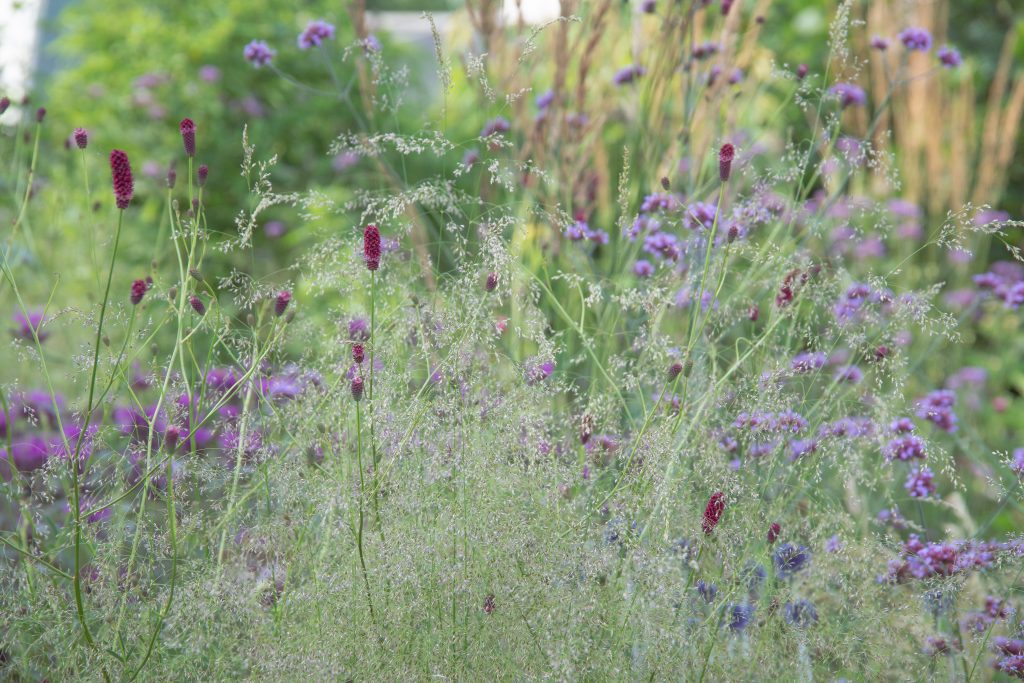
Proxies in re-wildling
In the world of re-wilding, the term “proxy” is used all the time. Usually to describe herbivorous animals such as English longhorn cattle, Tamworth pigs, Konik or Exmoor ponies, etc. Read more about these at Knepp.
These animals serve as proxies (substitutes) for the species that once roamed our land and carried out key “ecosystem services”. The most well-known of which was to prevent the formation of closed canopy woodland.
But can the idea of proxies be applied to plants in a garden setting?
Plants as proxies in gardens
Here in Britain, we have a load of amazing wild plants. Plants that are not only beautiful, but also serve key ecological roles. From feeding insects and herbivores, to building soil structure and cycling nutrients.
They’re all essential.
But when it comes to formal gardens, sticking with native plants can be a little limiting. Our native plants are often:
- Perceived by gardeners to be a bit boring (or common)
- Less showy
- Leaving spring and autumn gaps in pollinator forage.
That’s where near native plants come in. By incorporating plants that fill similar roles, in similar ecosystems, we can:
- Grow plants that are more desirable to most gardeners (perceived as less common)
- More showy
- Fill gaps in flowering at the beginning and end of the year
- Create plantings that still feel wild and fit with our surrounding environment
Choosing proxies: A daisy example (Asteraceae)
What should we be looking for when choosing proxies for our native flowers?
I think it’s a balance between picking plants that serve similar ecological functions (for wildlife) and plants that look similar-ish (for gardeners).
Either way, the place to start is by choosing plants for the same botanical family. Let me show you some examples as proxies for our lovely native Ox-eye Daisy (Leucanthemum vulgare).
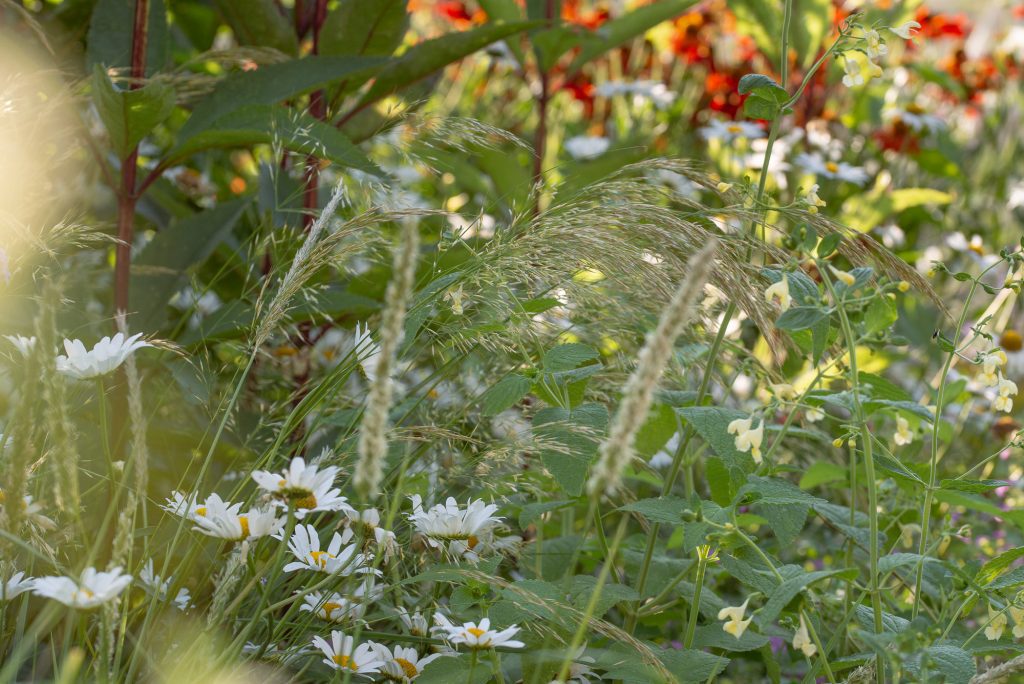
The white Ox-eye Daisies in this photo are an amazing plant. I use them in borders all the time as gap fillers. Most gardeners don’t do this (which I can understand) as they can take over if not managed, flower for a relatively short time (spring with a smaller flush in late summer), and don’t have especially showy seed heads.
To replace (or work alongside) the Ox-eye Daisy, we can look at other plants in the Asteraceae that grow in similar conditions like:
Orange Coneflower - Rudbeckia fulgida 'Blovi'
I don’t think any gardener could call the Yellow Coneflower boring. In fact, it’s a real eye catcher! And given that it fills similar ecological roles to our Ox-eye Daisy, I’m happy to call it a near native.
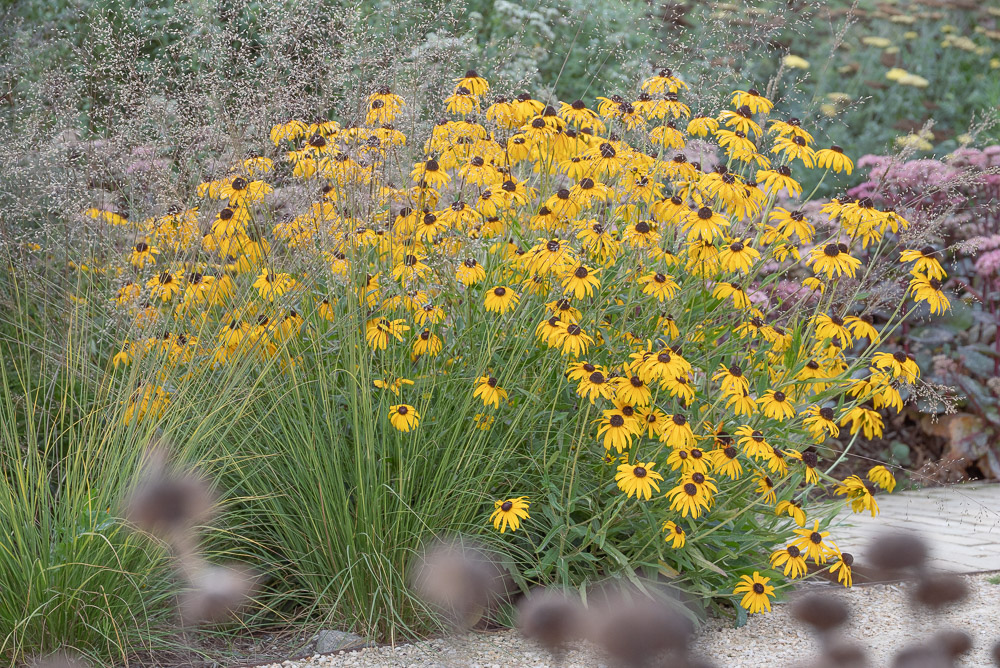
It’s native to North America, where it can be found growing in grassland, open woodland (think woodland edges), and by roadsides.
In terms of pollination, it fills a similar role, providing nectar for bees, butterflies, hoverflies etc. However, unlike the Ox-eye daisy, which flowers in spring, this flowers in late summer and autumn.
It’s a robust plant that clumps up well, so long as it’s given a sunny, free-draining spot. Its flower stems are quite strong, so unlike the Ox-eye Daisy, it doesn’t rely on other plants for support.
I feel that this plant can be used to great effect in Britain while still maintaining a wild, native feel.
Hervey's Aster - Eurybia x herveyi 'Twilight'
Hervey’s Aster is a “human-made” hybrid. But both its parents (E. macrophylla and E. spectabilis) are North American. The parents each come from quite different habitats, and as a result, Hervey’s Aster doesn’t seem to be very fussy. Perfect for gardens.
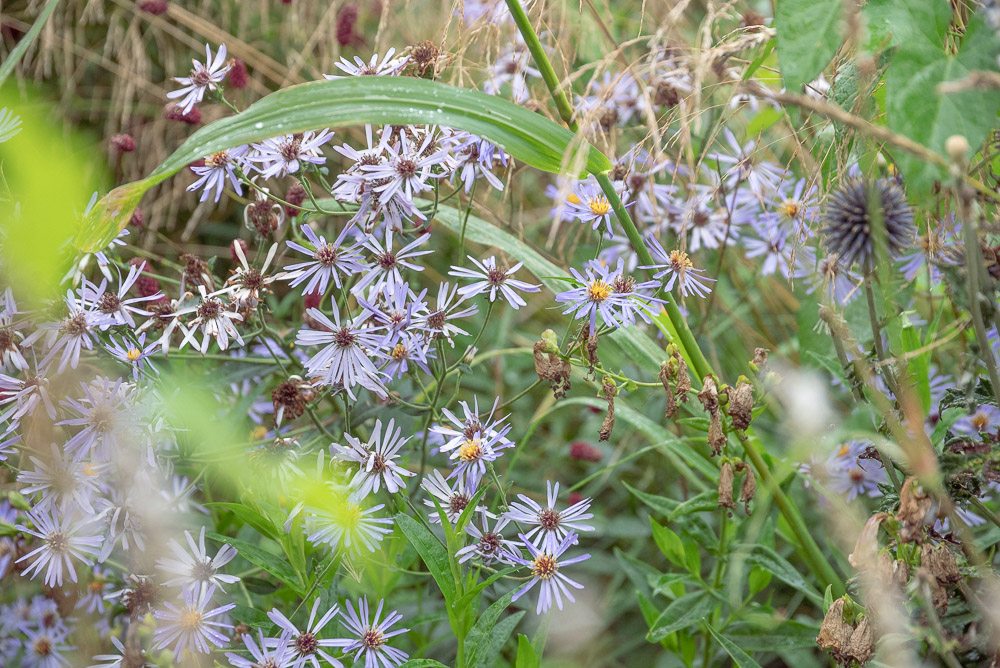
Like with most plants in the Asteraceae, it’s not fussy when it comes to pollinators either. Great for feeding a wide range of insects, like our native Ox-eye Daisy.
All round, another great choice for using alongside or instead of Ox-eye Daisy in a border where you need to retain that wild feel.
Pale Purple Coneflower - Echinacea pallida
This is my favourite Echinacea. It’s native to the prairies of North America. In our gardens, its flowering period overlaps with the Ox-eye Daisy (although it starts a little later).
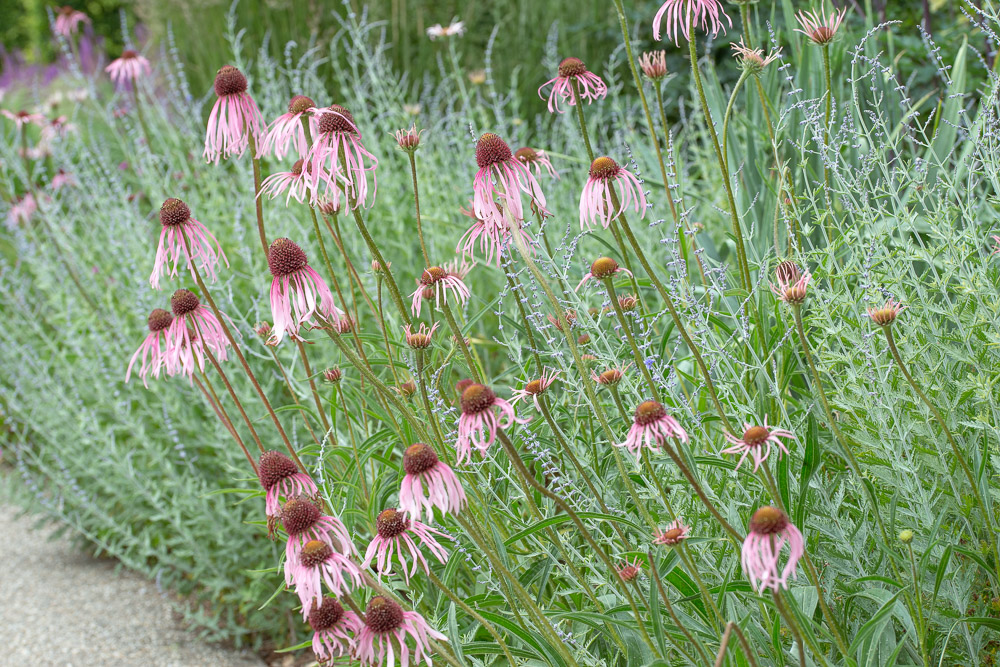
Bees are its main pollinator, but it also feeds seed-eating birds like goldfinches later in the year.
Its tall stems are like those of Ox-eye Daisy, but much more sturdy and more attractive when flowering has finished.
It works especially well in borders with lots of grasses, as this mimics its native prairie habitat. A habitat that is similar in many ways to the British grassland where the Ox-eye Daisy thrives.
Have you ever considered plants as proxies?
I’m interested to know if you’ve thought about near native plants in this way? Do you think it’s useful?
I think it’s a really helpful technique when considering plant choice in naturalistic gardens.
I’m going to write some more blog posts that discuss substitutes for our native species in naturalistic plantings in the near future.
Wishing you a wild autumn.
Joe

Joe Vary Dip. Hort (Wisley), MCIHort, CMTGG
I'm a gardener, educator, consultant, and planting designer. Learn with me 1-to-1, or join my mentoring group and community.

This Post Has 2 Comments
Hey Joe. With your last two blogs I have found the direction that I think I would like any garden of mine to go in !!! I really like the idea of the near native plants particularly mixed in with the grasses and airey plants that you highlighted in a previous post. I have gradually realised that the ‘natural look’ ( even though I think it still needs to be planned) incorporates some of my new favourite plants, most of which you have introduced to me through your blogs.
I hope you keep us updated on your new project with the garden where you are hoping to create the seamless border with the existing meadow. Good luck with that.
Thanks Jo,
I’m really pleased the blog posts are helping you in your garden.
Very much looking forward toward to seeing your garden continue to develop and achieving a natural feel that you love.
Happy gardening!
Joe